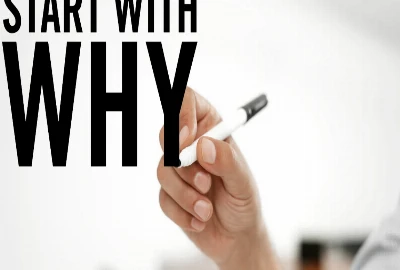Digital Minimalism vs. Content Overload: Can We Ever Log Off for Real?

We live in a world where every waking moment seems tethered to a screen. Our days start with a flood of notifications and end with one last scroll through a feed that never runs out of content. On one side, there’s a growing movement toward digital minimalism—a lifestyle choice that emphasizes intentional tech use, quiet focus, and living offline as much as possible. On the other, there’s the reality of content overload, where platforms churn out endless streams of videos, articles, memes, and ads competing for our fractured attention.
The question at the heart of modern digital life is simple yet deeply complex: Can we ever truly log off for real? While some argue that detoxing from screens and curating intentional consumption is the only path to mental clarity, others point out that digital minimalism feels like swimming against a current that keeps getting stronger. This blog explores the rise of digital minimalism, the challenges of escaping content overload, the psychological traps that keep us scrolling, and practical steps for achieving balance without going fully off the grid.
What is Digital Minimalism, and Why Is It So Tempting?
At its core, digital minimalism is about stripping away the unnecessary digital noise in order to reclaim time, focus, and peace of mind. The term gained popularity through Cal Newport’s book Digital Minimalism, where he describes it as a philosophy of technology use where less is more. Instead of constantly being “on,” minimalists choose to use digital tools only when they add genuine value to their lives.
The appeal of digital minimalism is clear. Studies show that constant digital stimulation can lead to decision fatigue, stress, and even reduced creativity. People who embrace minimalism often report improved sleep, stronger real-life relationships, and a renewed sense of presence. The idea of putting the phone away during meals, unsubscribing from unnecessary newsletters, and deleting apps that don’t serve a meaningful purpose feels like an antidote to the chaos of the online world.
Yet, the practice is not just about decluttering apps—it’s about rewiring habits. Digital minimalists often schedule time offline, engage in hobbies that don’t involve screens, and intentionally create space for boredom—something most of us have forgotten how to experience. Boredom, after all, can spark creativity and deeper reflection.
Still, the biggest challenge is that digital minimalism requires constant discipline. Our devices are designed to be addictive, and opting out can feel like resisting not just apps, but an entire culture of hyper-connectivity. The irony is that even discussions about digital minimalism usually happen online, highlighting just how inescapable the digital world has become.

The Problem of Content Overload
While minimalism offers a clean, quiet escape, content overload is the default setting of modern life. Platforms like TikTok, Instagram, and YouTube thrive on feeding us an endless stream of short, dopamine-inducing snippets. The internet never ends—there’s always another video to watch, another article to read, another influencer to follow.
This abundance might sound like a good thing, but the reality is overwhelming. Content overload leads to a phenomenon known as decision paralysis, where the sheer number of choices makes it harder to decide what to consume—or even if we should consume at all. Instead of feeling fulfilled, many people end up anxious, distracted, and exhausted.
Another problem with content overload is quality dilution. With so much content being produced every second, it’s harder to distinguish meaningful information from noise. Important news gets buried under memes, ads, and viral trends. Even creators feel the weight of this overload, often pressured to post constantly just to stay relevant.
Moreover, content overload changes the way our brains process information. Psychologists argue that constant consumption rewires attention spans, making it harder to focus on long-form content or even finish a book. The rise of micro-entertainment—like TikTok clips or Instagram Reels—encourages fast, passive consumption rather than active engagement.
In short, content overload isn’t just a nuisance—it’s shaping our culture, our habits, and even our cognitive abilities. It creates a vicious cycle: the more content there is, the more we consume, and the more exhausted we become. Breaking free requires intentional effort, yet the platforms profit precisely from keeping us locked in.

Why Logging Off Feels Impossible
If digital minimalism offers freedom, why don’t more of us embrace it? The simple answer: logging off is harder than it sounds. There are several reasons why truly disconnecting feels almost impossible in today’s world.
First, our work lives are tied to technology. Remote work, emails, Slack messages, and video calls mean that “logging off” isn’t just a personal choice—it can feel like professional sabotage. Even when we want to set boundaries, expectations from employers, clients, or colleagues keep us tethered to screens.
Second, there’s the issue of social belonging. So much of our social interaction now happens online, from group chats to social media updates. Logging off can feel like missing out on connections, inside jokes, or even important life updates. The fear of missing out (FOMO) keeps us glued to our feeds, even when we know they’re draining us.
Third, platforms are deliberately designed to keep us hooked. Features like infinite scroll, push notifications, and algorithmic recommendations aren’t accidents—they’re tools of persuasion. Every time we log in, we’re met with a carefully curated stream of “just one more thing” that makes putting the phone down harder than it should be.
Finally, there’s the identity factor. For many people, online presence isn’t just entertainment—it’s part of who they are. Whether it’s personal branding, content creation, or simply curating a digital self, logging off can feel like erasing a part of one’s identity.
In other words, disconnecting is more than just deleting an app. It’s untangling work, social life, and even self-worth from a digital ecosystem built to be inescapable. That’s why, even as digital minimalism gains traction, the majority of us remain caught in the loop of content overload.

Practical Steps Toward Balance
So, if completely logging off isn’t realistic for most people, what’s the alternative? The answer lies in finding balance—using technology intentionally while avoiding the traps of content overload. Here are some actionable steps to consider:
Audit Your Digital Life
Start by tracking where your time actually goes. Apps like Screen Time or Digital Wellbeing can give you a clear picture of your habits. Identify which platforms drain your energy versus which add genuine value.
Set Boundaries with Time Blocks
Instead of banning social media outright, designate specific windows for digital use. For example, check emails only twice a day or allow yourself 30 minutes of scrolling after dinner. This shifts consumption from impulsive to intentional.
Declutter Your Devices
Unfollow accounts that don’t inspire you, unsubscribe from newsletters you never read, and delete apps that don’t serve a real purpose. A cleaner digital environment makes minimalism easier to maintain.
Practice Mindful Consumption
Before clicking on a video or article, pause and ask: Why am I consuming this? Is it for learning, relaxation, or just boredom? This simple question helps filter out meaningless scrolling.
Reintroduce Offline Activities
Fill the time you’d normally spend online with activities that ground you—reading physical books, cooking, exercising, or spending time outdoors. Offline hobbies remind you that joy doesn’t always come with a screen.
Digital Sabbaths
Try setting aside one day a week where you intentionally log off. Even a few hours of uninterrupted offline time can reset your relationship with technology.
By implementing these steps, the goal isn’t to reject technology altogether but to reassert control over it. Balance means making tech work for you—not the other way around.





